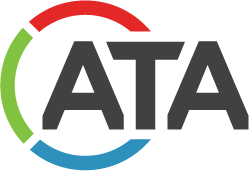This is all, of course, in the framework of an economy that’s: a) suffering a collapse of middle-class jobs; b) undergoing nothing more than the usual adjustments of the perennial technology/employment balance; c) recovered from the Great Recession and adding manufacturing jobs at a growing rate; and d, e and f) growing from, suffering from or ignoring the issue of globalization of markets. The data I’ve found most convincing so far tends to support my nascent theories of a connection between election-year politics and astrophysical events, when a team of NASA researchers recently reported: “We found evidence that supermassive black hole seeds can form directly from the collapse of a giant gas cloud, skipping any intermediate steps.”
“Partners in success” discusses the efficiencies and long-term effects of equipment and automation, performance, productivity and price—not just on profits, but on labor. Some of our experts say that expanding automation does ultimately mean fewer employees; some say that a business that can make each product more cheaply can also afford to hire more workers to make more products, expanding operations as well as income. I admit that’s what I was hoping to hear when I assigned this article—so if you have a story that can support this side of the equation, please contact me, or track me down in Charlotte this October.
Another important issue now is the need for ongoing innovation—and how to commercialize it. In June, contributing editor Janet Preus wrote about the Smart Fabrics Summit held in Washington, D.C., in April, and the “market realities” of bringing these technologies to consumers. “Smart fabrics, smart move” discusses taking these products from research to manufacturing reality, with the help of the Advanced Functional Fabrics of America Institute, part of the National Network for Manufacturing Innovation.
Not all innovations will, or will need to, reshape the marketplace. But for those that do, it seems that going it alone is either prohibitively expensive or requires expertise that isn’t readily available. These research and innovation hubs will bring together the experts needed to go from theory to practical reality in a variety of industries, to the benefit of manufacturers and consumers.
The U.S. Chamber of Commerce Foundation calls the collaboration of industry, academia, and government “A game changer for the U.S. economic future.” The collaboration of industry and industry could be even more powerful.
 TEXTILES.ORG
TEXTILES.ORG



